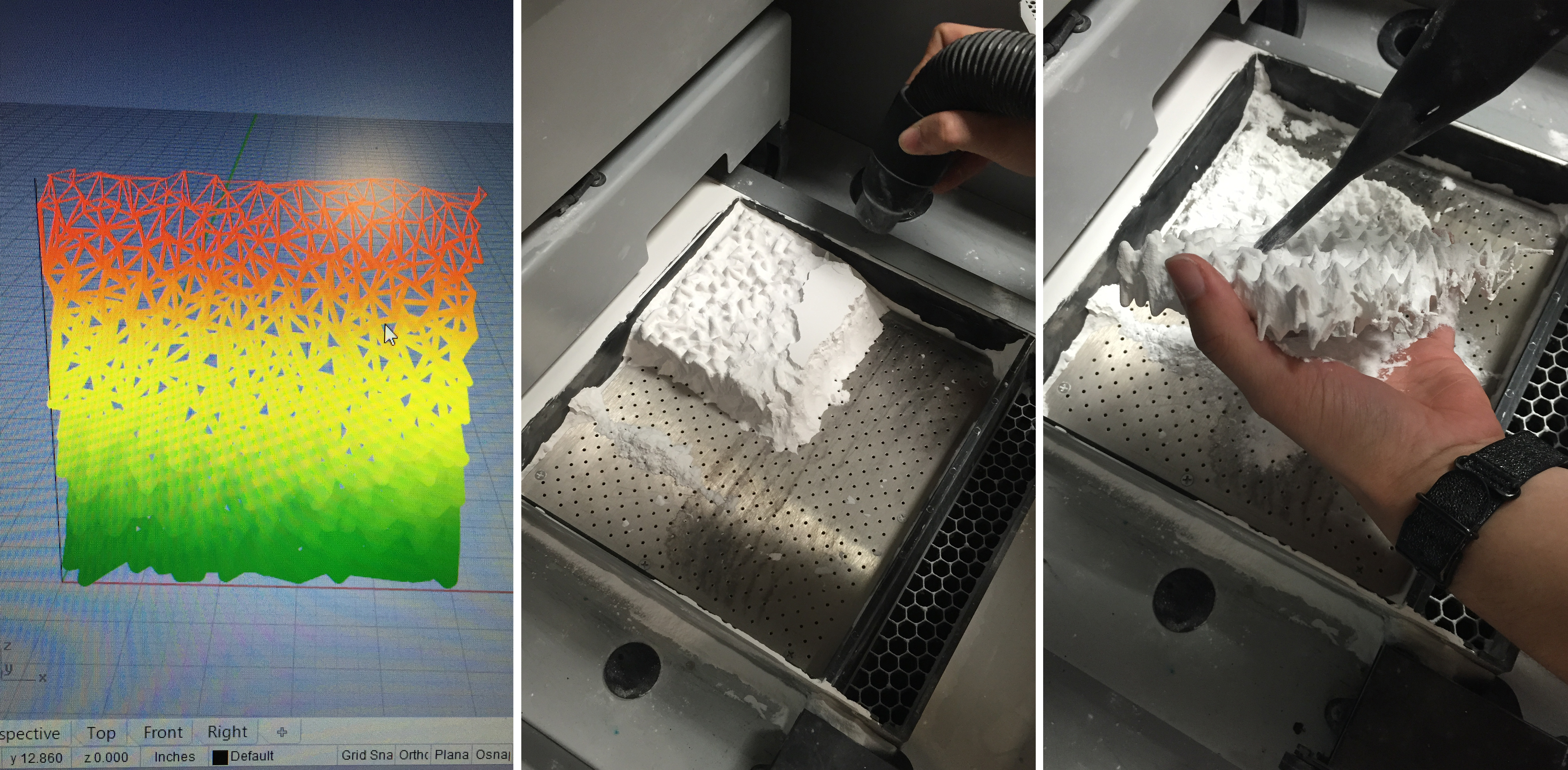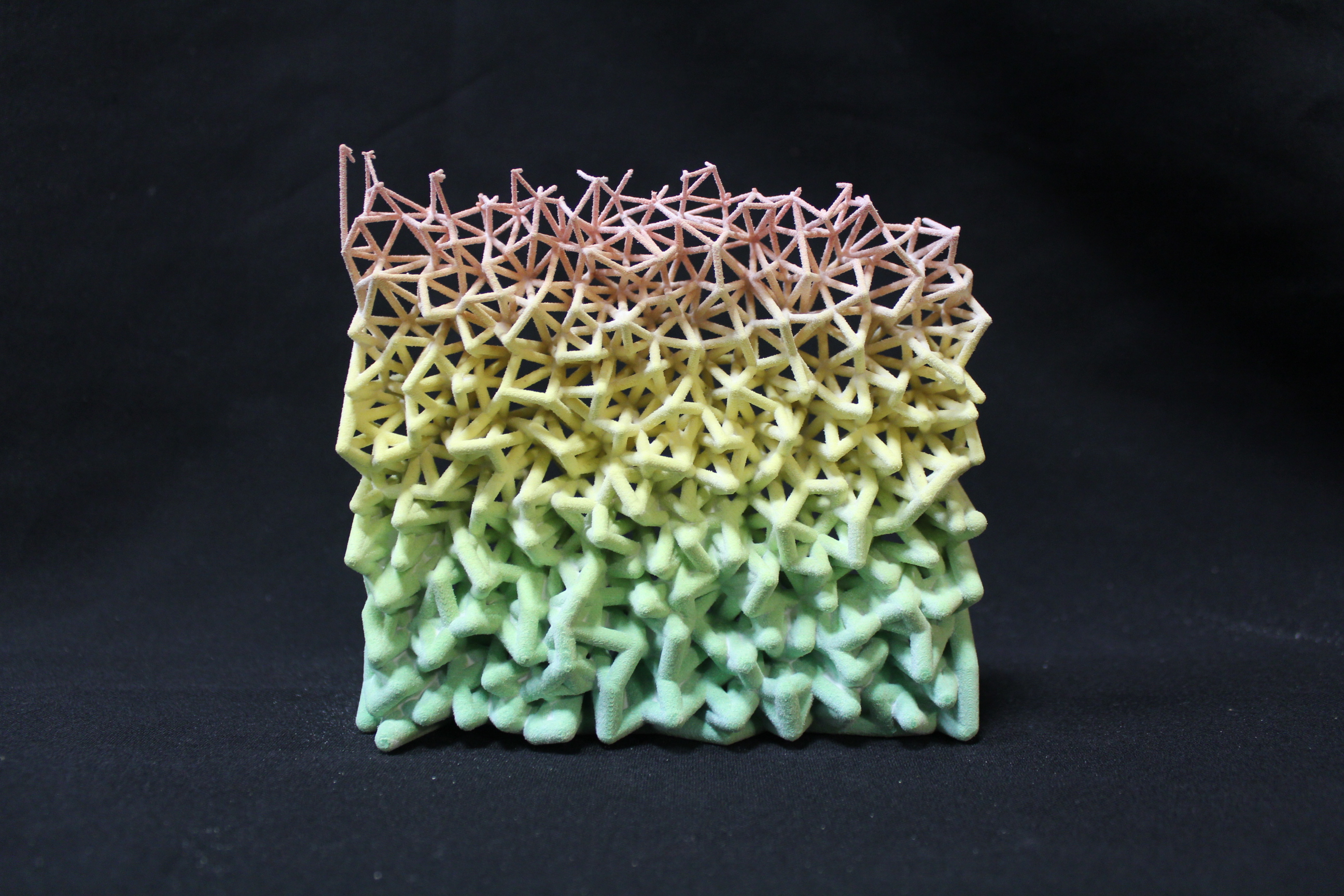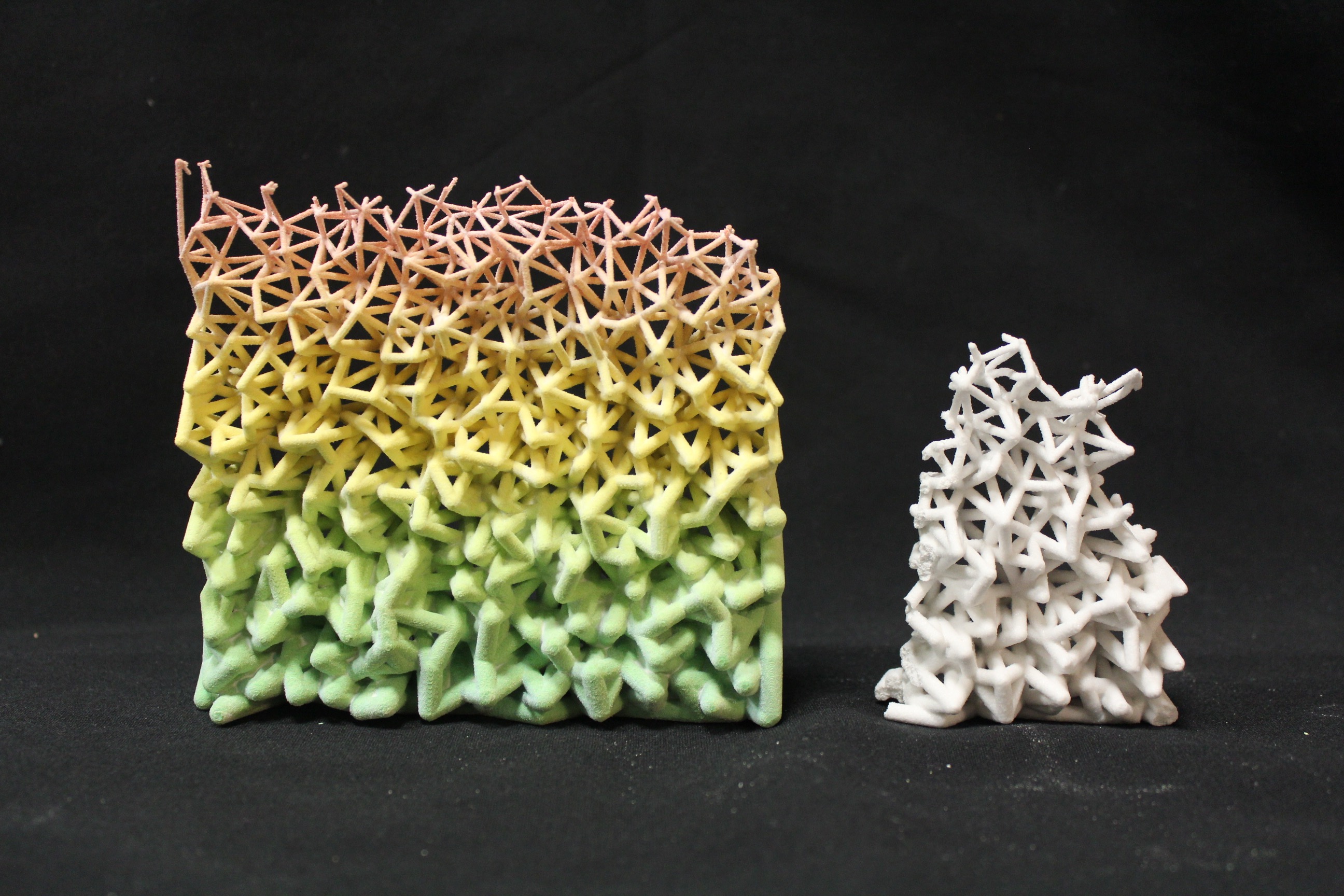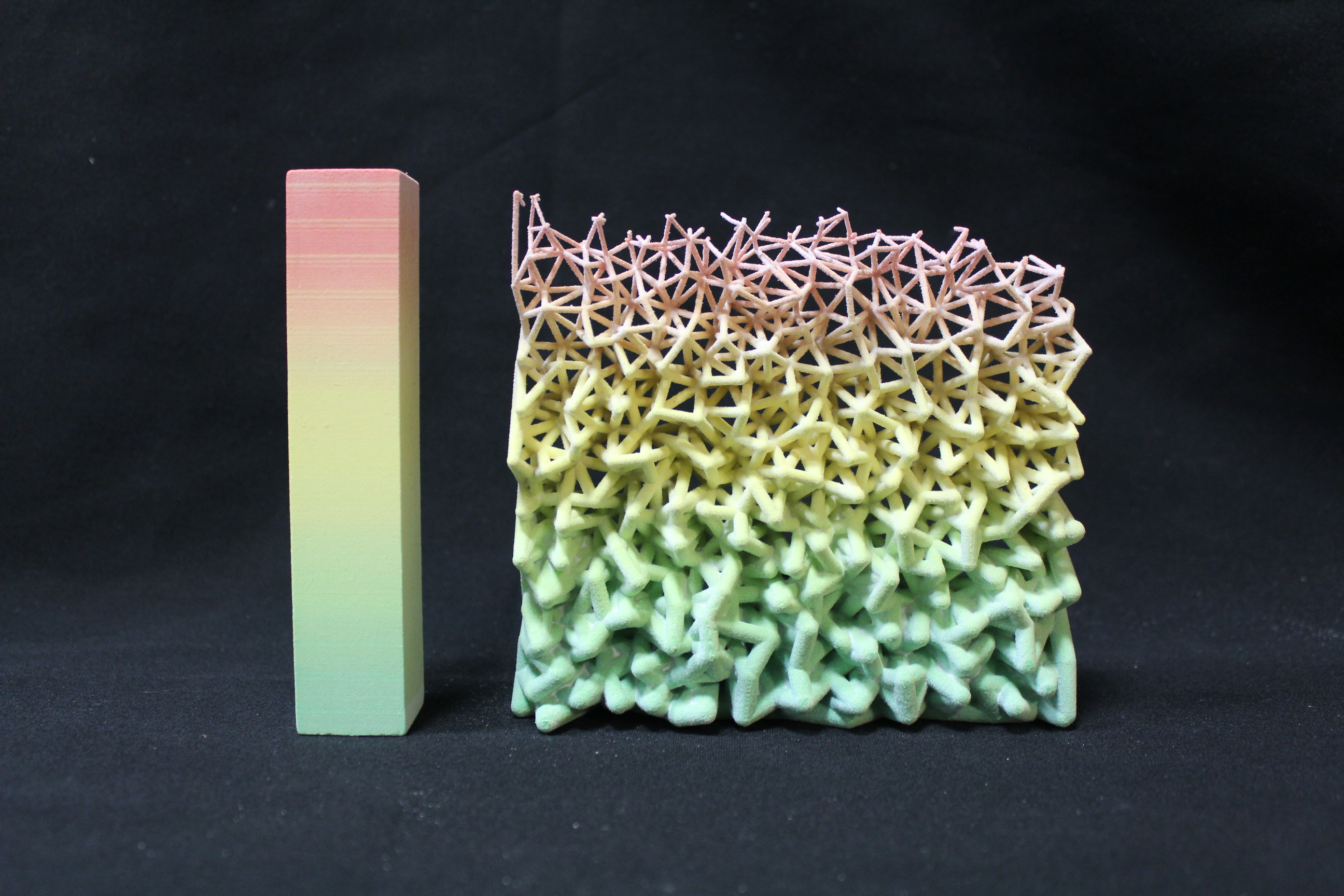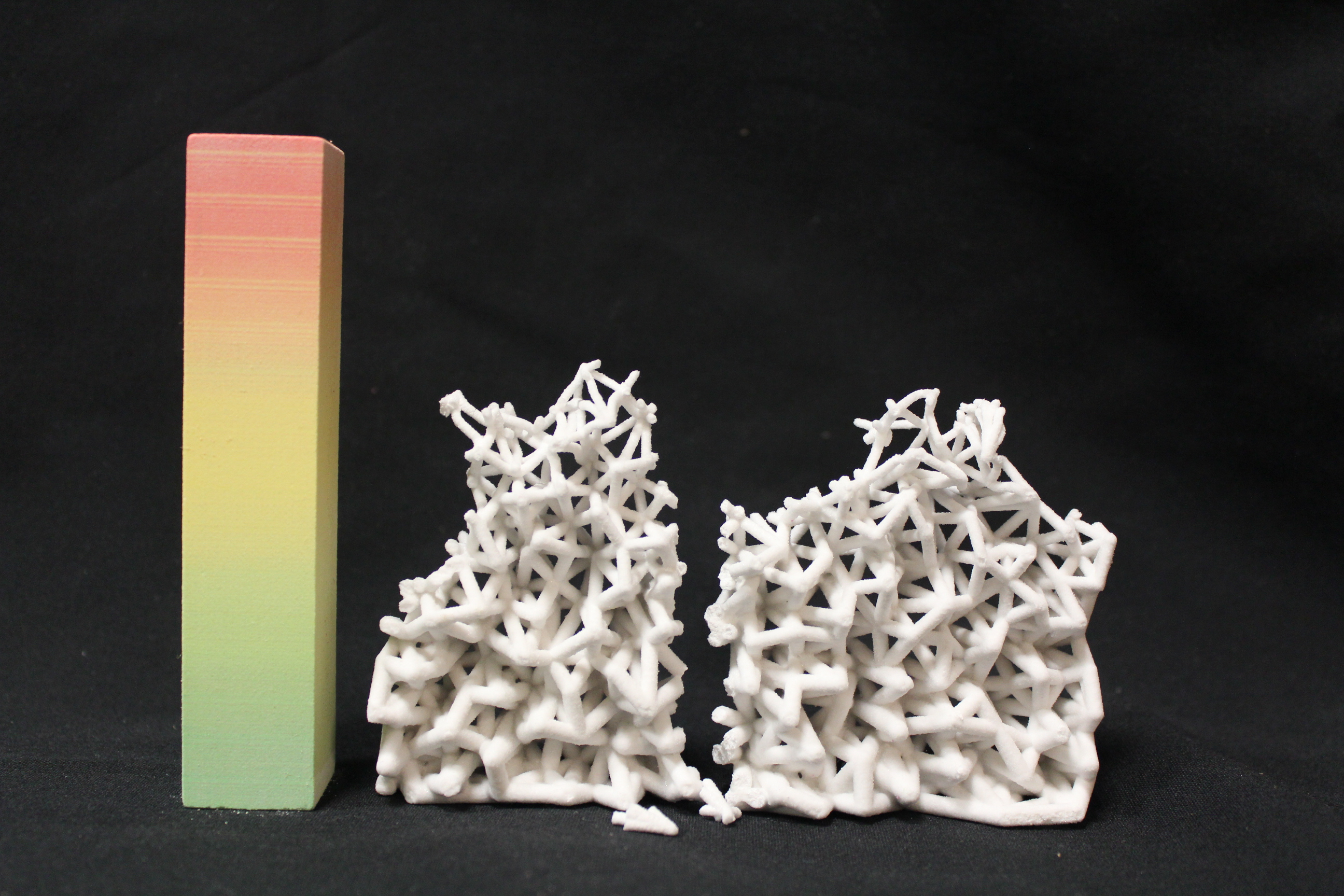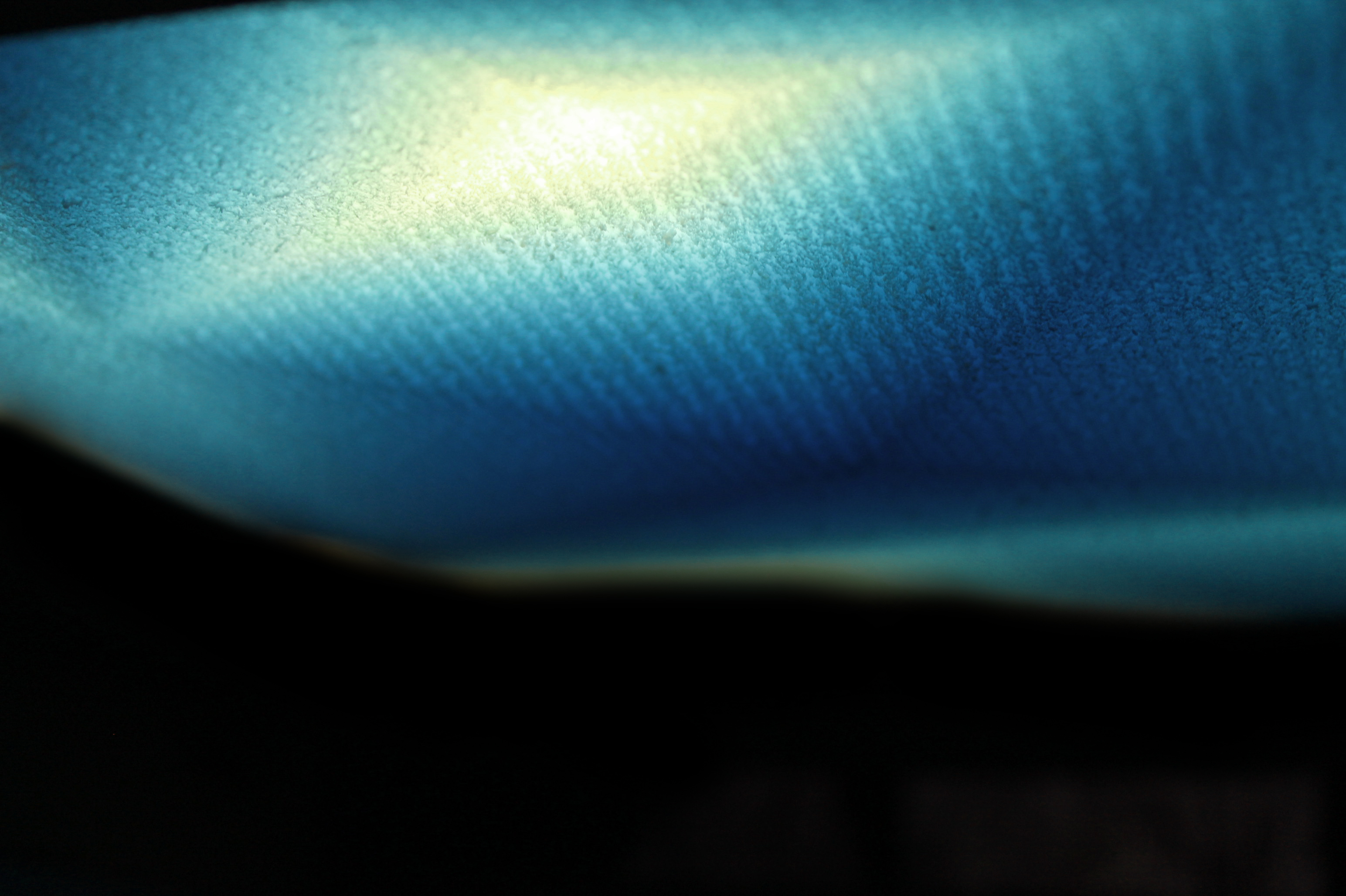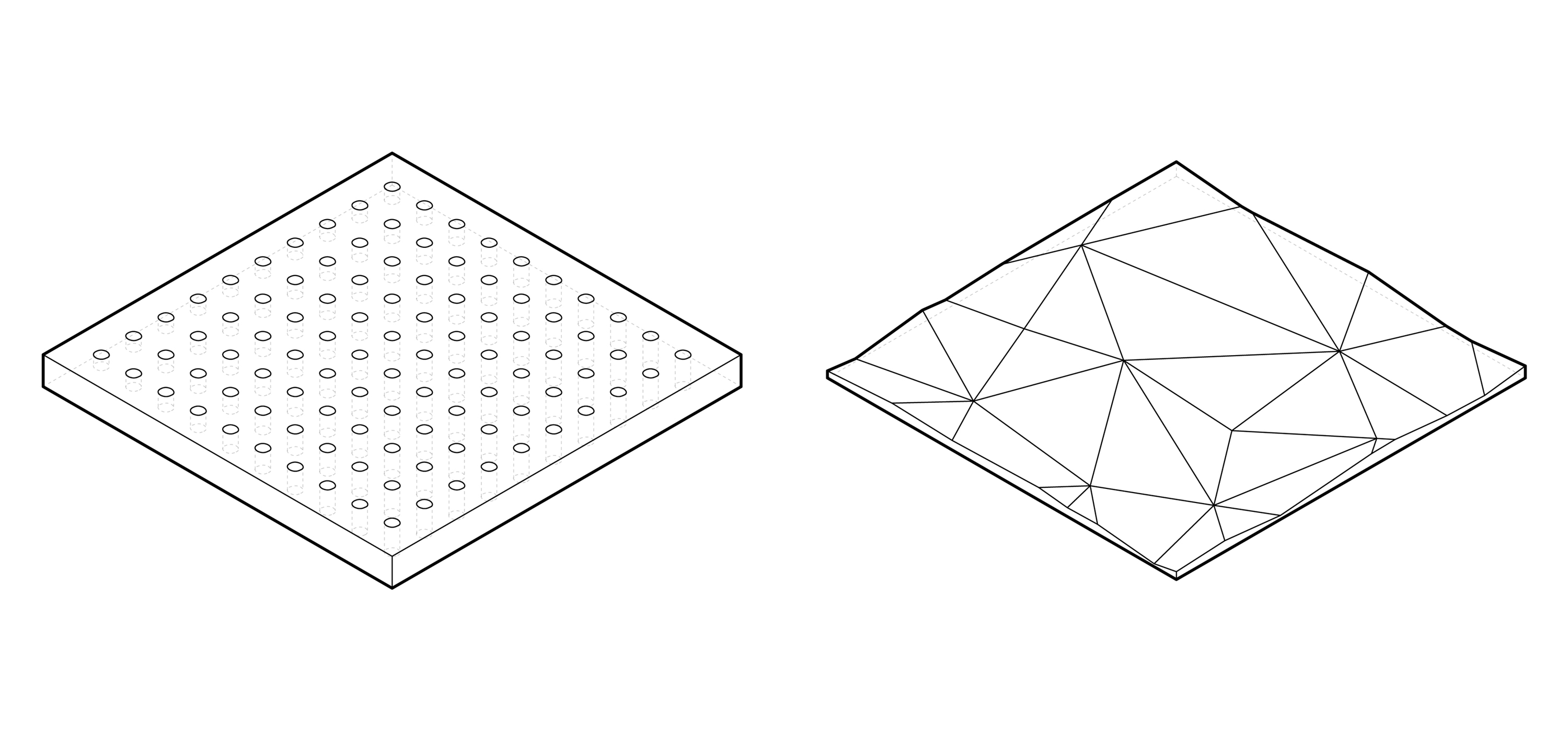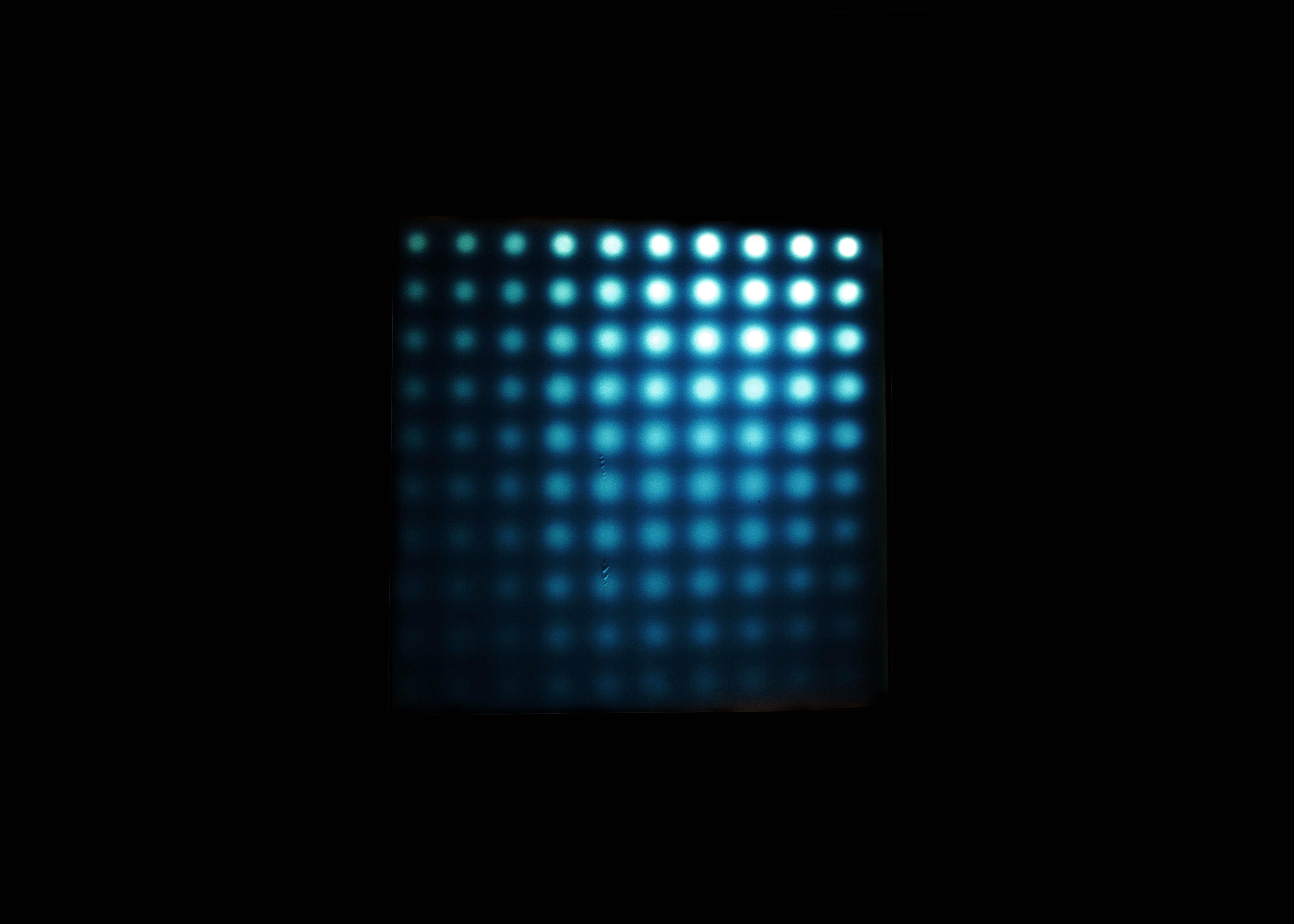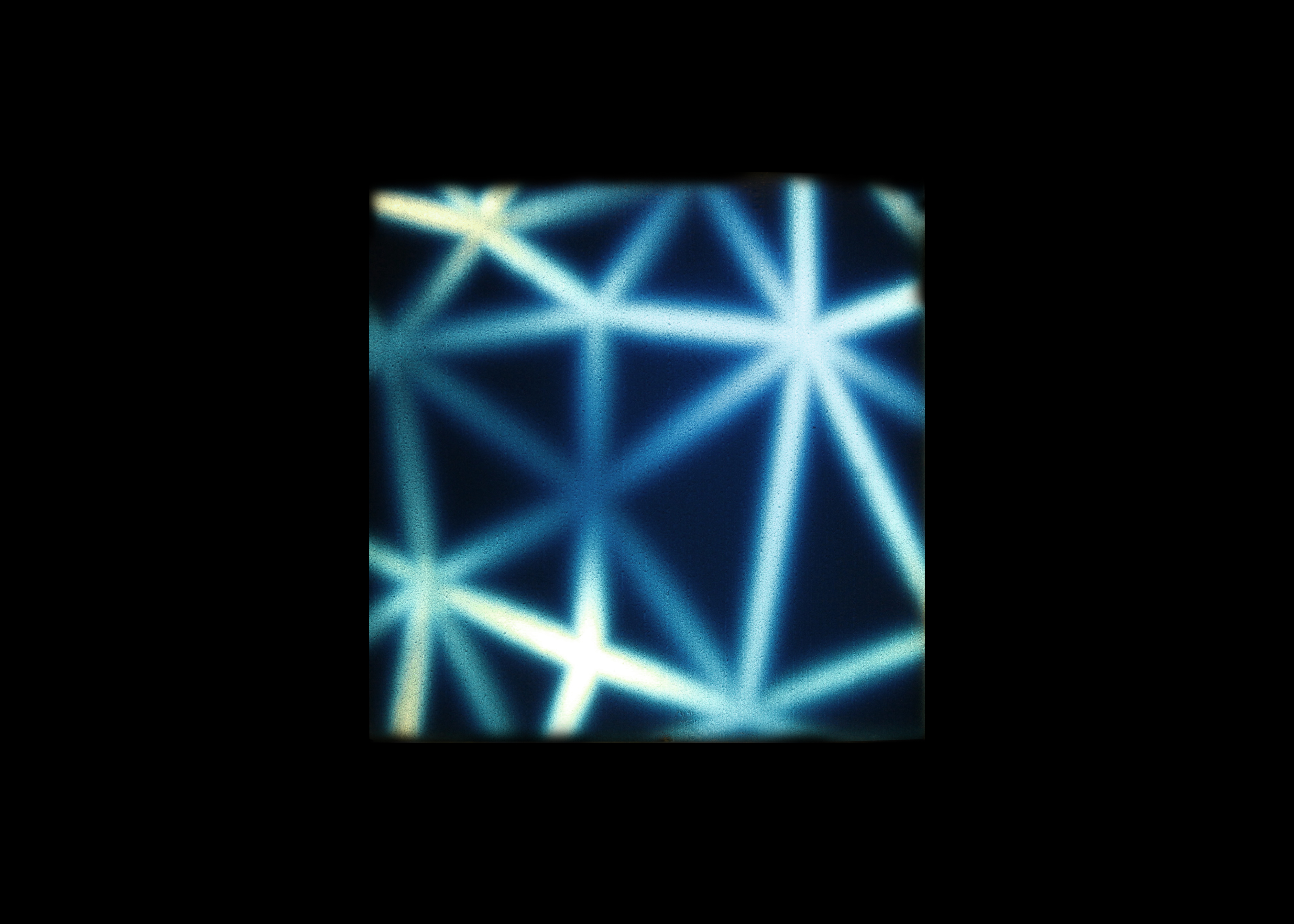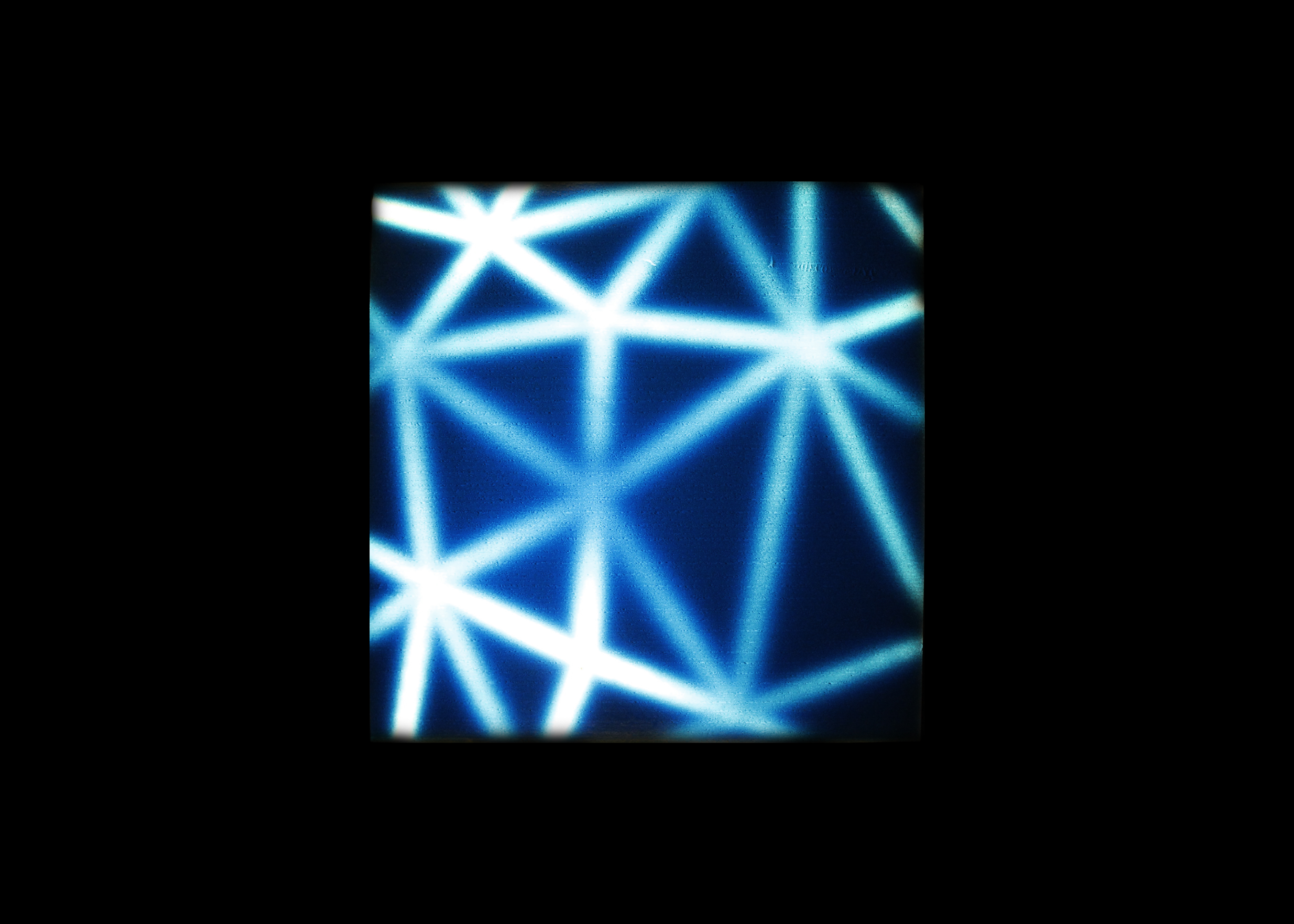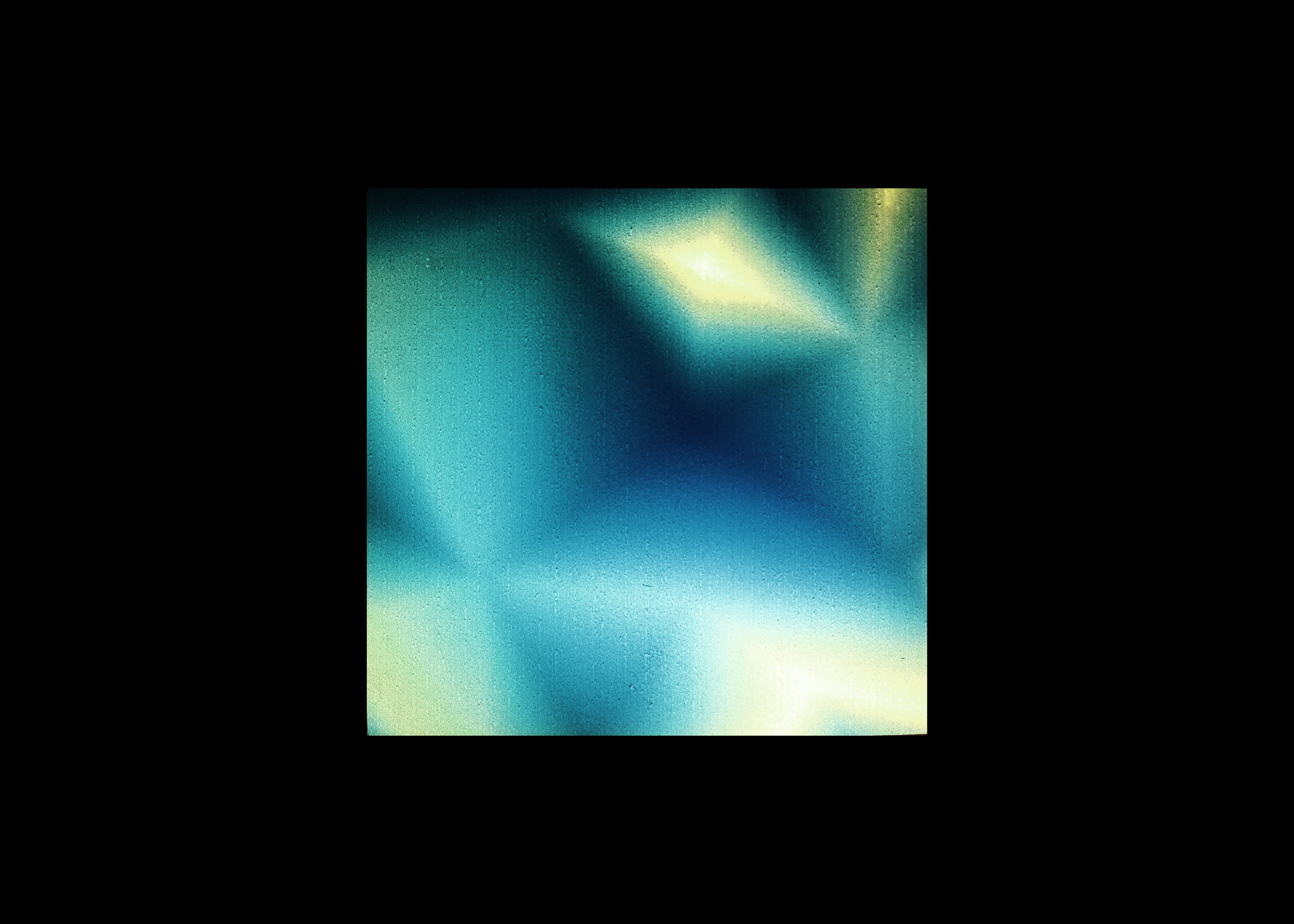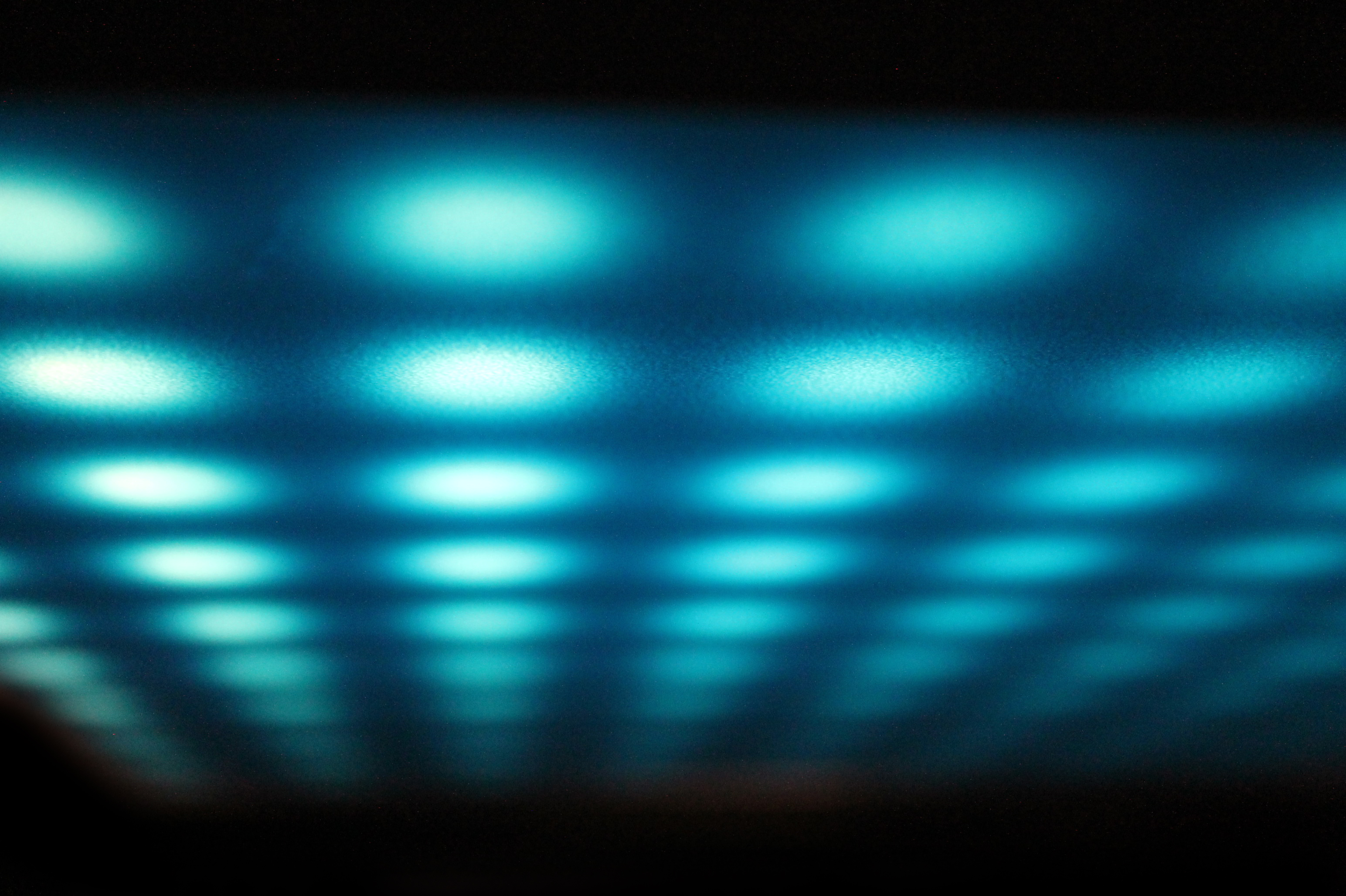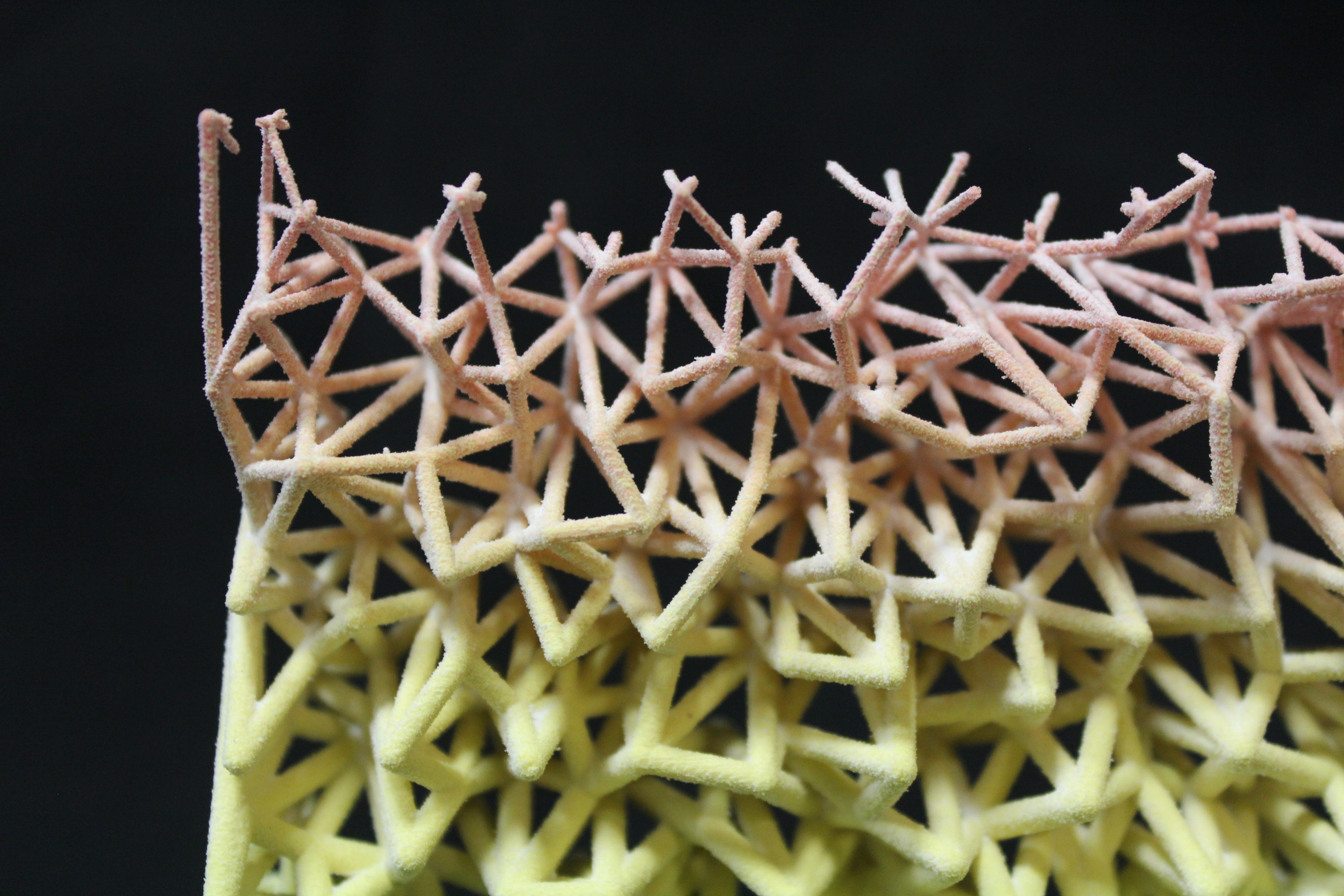
3D Printing Tolerance
The goal for this study was to determine a diametrical tolerance for powder printing with a ZCorp 450.
A range of piped delauney geometry was generated using grasshopper, beginning with .25 inches at its maximum and .01 inches at its minimum. In an attempt to glean at least a graphic reference from the experiment, the geometry was colorized on a standardized green-yellow-red spectrum and printed alongside standard vertical bar geometry with a matching color scheme.
At the conclusion of the experiment, it was determined that the ZCorp 450 begins to lose consistent print quality just beyond .0625 inches for freestanding linear geometry. The printed models and color bar were displayed on the top of the 3D printer as a reference to students using the machine.
Conducted at Wentworth Institute of Technology. Indiviudal applied research, 2014.
